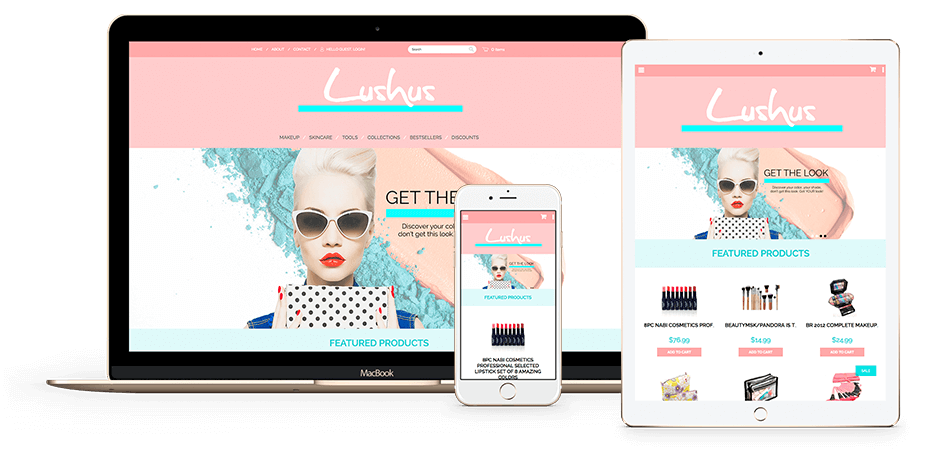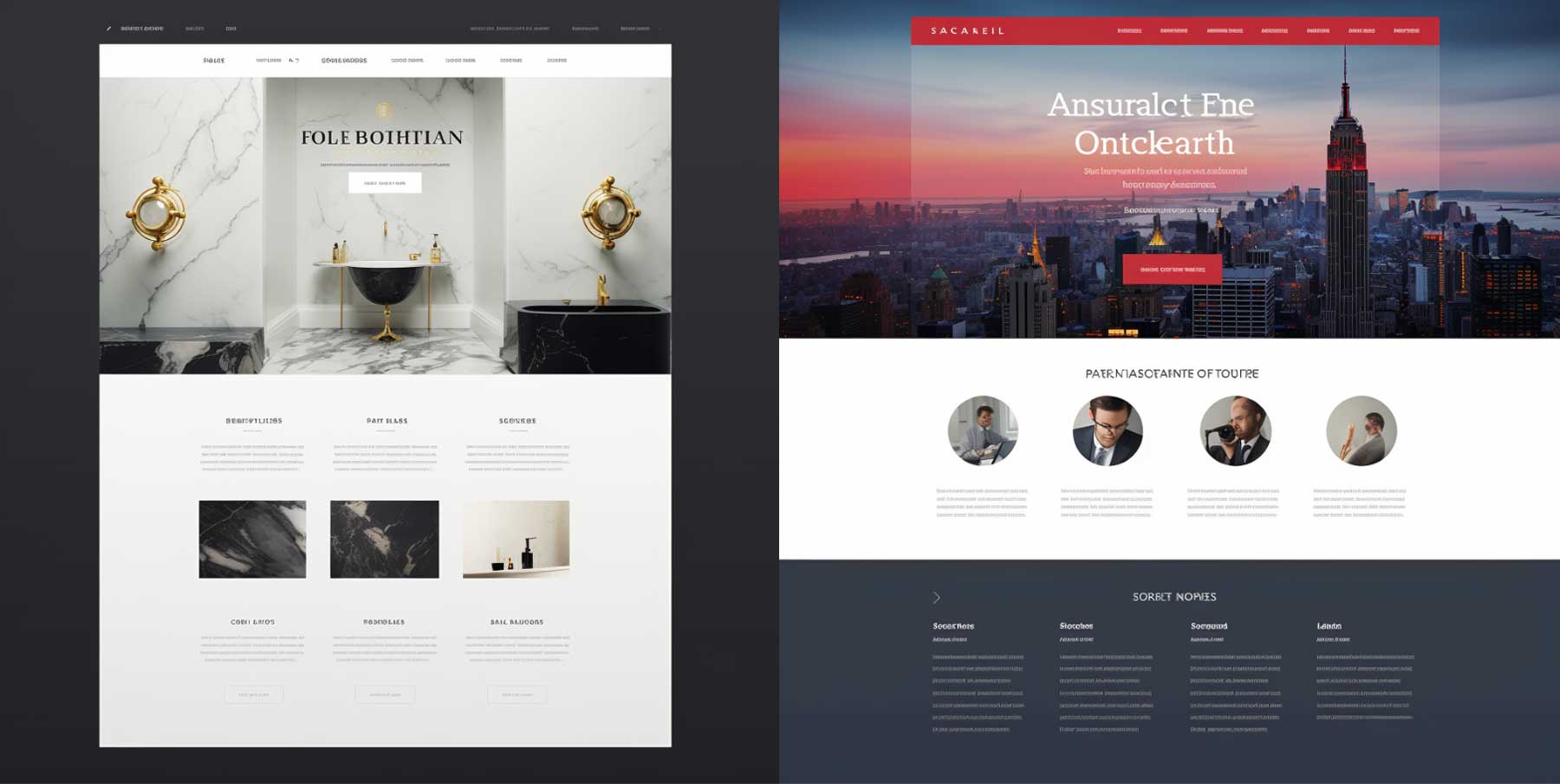The Role of Website Design in Enhancing Brand Identity and Recognition
The Role of Website Design in Enhancing Brand Identity and Recognition
Blog Article
Modern Internet Site Style That Captures Attention and Converts
In an increasingly electronic landscape, modern website style has actually become a pivotal consider recording customer interest and driving conversions. By strategically using visual pecking order, responsive formats, and engaging interactive components, designers can create experiences that not just draw in site visitors but additionally assist in meaningful communications. Moreover, reliable call-to-action methods play an important role in directing users towards preferred results. As we explore these important parts, it becomes clear that recognizing their interplay can considerably influence a site's efficiency and customer contentment. What are the crucial elements that absolutely make a distinction?
Significance of Visual Pecking Order
Visual hierarchy is an essential element in internet site style, as it overviews customers' focus and improves their total experience. By tactically organizing content, developers can direct individuals to the most essential details first, therefore raising interaction and boosting usability.
Including a rational flow in material setup is essential; for circumstances, putting one of the most important details at the top of a web page promotes immediate recognition. In addition, regular use of typography, such as differing font sizes and styles, assists develop a clear content structure. This company not just aids in navigation yet likewise constructs trust, as individuals really feel much more comfy when they can conveniently find what they are seeking.
Eventually, a well-executed aesthetic hierarchy not only improves aesthetic allure yet also considerably influences individual actions. By focusing on crucial aspects and guaranteeing a seamless experience, designers can properly transform visitors into consumers, enhancing the significance of this foundational style principle in modern-day internet site growth.
Responsive Layout for All Instruments
Creating a seamless experience across various devices is necessary in today's digital landscape, where users access websites from desktops, smartphones, and tablet computers alike. Responsive design is a vital technique that ensures internet sites adjust fluidly to various screen resolutions, alignments, and sizes. By utilizing flexible grids, images, and CSS media questions, developers can develop designs that maintain aesthetic integrity and functionality, despite the tool being utilized.
The significance of receptive design expands beyond aesthetics; it straight affects user involvement and conversion rates. A website that works well on all tools motivates longer sees and reduces bounce rates, as individuals are more most likely to interact with material that is easy to browse. Additionally, search engines, specifically Google, prioritize mobile-friendly websites in their rankings, making responsive layout an important element of seo (SEO)
Integrating receptive design not only boosts individual experience yet also simplifies the growth procedure. By creating a single site that works throughout tools, businesses can save time and resources contrasted to establishing different mobile and desktop computer versions. Ultimately, receptive design is an essential method for modern-day internet site layout, ensuring availability and satisfaction for all users, no matter their device.
Engaging Interactive Elements
While a responsive design prepares for a practical website, integrating appealing interactive components is important for recording individual attention and cultivating much deeper links. Website Design. Interactive components, such as computer animations, quizzes, and clickable infographics, create an extra vibrant customer experience, motivating site visitors to invest even more time on the site
Integrating interactive functions can additionally guide users via complicated details, making it easier to absorb web content. Interactive sliders can show item variants, while embedded videos can provide demos or testimonials that resonate more than Going Here fixed pictures or text. Gamification techniques, like incentives for involving or finishing jobs with content, can improve customer motivation and retention.
Efficient use of interactive aspects not only enhances the user experience yet can likewise bring about greater conversion rates. By making communications informative and enjoyable, organizations can cultivate a feeling of loyalty and count on with their target market. Nonetheless, it is vital to stabilize interactivity with performance; overly complex functions might hinder website speed, negatively impacting customer fulfillment. Ultimately, integrating well-designed interactive components can substantially elevate a web site's efficiency, driving involvement and conversions in today's competitive electronic landscape.
Streamlined Navigation Practices
Effective navigating is a cornerstone of any type of effective internet site, as it straight influences individual experience and material access. Structured navigating techniques make certain that users can easily find info, enhancing their interaction with the website. A well-structured navigating menu ought to be easy and user-friendly, normally including a restricted number of key groups to avoid frustrating site visitors.
To achieve structured navigating, developers must prioritize an ordered framework that logically arranges material. Executing breadcrumb trails can provide individuals with context regarding their existing place within the site, enabling smooth backtracking. In addition, using drop-down menus can effectively preserve space while still providing accessibility to subcategories.
Responsive layout is critical, as navigation needs to be practical across all tools (Website Design). Mobile individuals, in particular, take advantage of touch-friendly food selections and collapsible areas that maintain use without jeopardizing looks

Effective Call-to-Action Strategies
A well-crafted call-to-action (CTA) is important for leading individuals toward wanted results on a web site, as it encourages them to engage with web content or buy. To maximize their efficiency, CTAs should be clear, engaging, and strategically put throughout the site.
First, utilize action-oriented language that communicates seriousness or worth, such as "Get Started," "Sign up with Now," or "Insurance claim Your Price cut." This language not only inspires customers but likewise sets clear assumptions about the next actions.
2nd, consider style components; CTAs ought to attract attention visually via contrasting colors, enough whitespace, and prominent positioning. A button that is simple to see and click increases the likelihood of individual communication.
In addition, personalizing CTAs based on customer actions or demographics can substantially improve interaction. Customized messages reverberate extra with users, driving greater conversion rates.

Conclusion
These components collectively enhance customer experience, making certain that site visitors stay involved and inspired to check out content further. By focusing on these style principles, services can substantially boost individual retention and conversion rates, ultimately leading to better success in the electronic landscape.
In a progressively electronic landscape, modern internet site layout has arised as a pivotal aspect in capturing user focus and driving conversions.Aesthetic pecking order is an important aspect in site design, as it overviews users' focus and improves their general experience.The importance of receptive design expands beyond looks; it directly influences individual engagement and conversion prices.Including receptive design not just enhances customer experience but additionally enhances the advancement content procedure. Ultimately, responsive style is a basic approach for contemporary internet site style, making certain availability and fulfillment for all users, regardless of their gadget.
Report this page